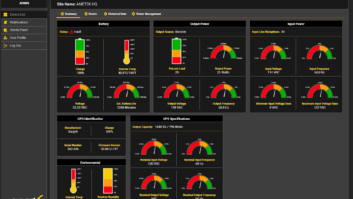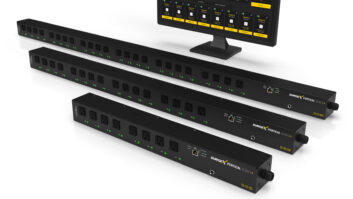You’re on a flight to Vegas. A flight you’ve taken dozens of times. Boring. Routine. But you happen to glance over at the passenger seated next to you and it’s… is it? Yes, it’s Anne Hathaway! She winks. You flirt. One thing leads to another, and you find yourself in the lavatory for 10 hot, passionate, cramped-and-sweaty-but-utterly-mind-blowing minutes with Anne Freaking Hathaway.
Here’s the problem with that fantasy scenario: who would you tell if it actually happened? You would tell no one. Not a soul. Because, really, why on earth would anyone in his right mind believe you?
I feel like that right now, just without the benefit of post-Anne-Hathaway-coital bliss. Because three days after installing SurgeX’s new XC18 Space Saver surge eliminator, during the midst of one of those wicked autumn thunderstorms that we get here in Alabama, the only massive surge I’ve ever experienced in the history of ever coursed through one circuit of my home–the one that just so happens to include my home theater and master bedroom entertainment systems.

The guts of the SurgeX XC18 surge eliminator are contained in a little black box without a single power outlet. Its outlets are instead imbedded in a strip that mounts vertically to the back of your rack.
The big name-brand surge protector in the bedroom? Toast. The SurgeX XC18 in the home theater? It didn’t even flinch. All of the AV gear in both rooms is fine, for the record. But in the one room, I still have a perfectly functional protection system, and in the other, I’ve got a charred sacrificial lamb that has to be replaced. That product’s warranty, ironically enough, is null and void if the unit isn’t unplugged during a lightning storm. And again, I remind you, I live in Alabama; if I went around unplugging every surge protector before every lightning storm, I could give up calisthenics completely.
I’ve typed and deleted that anecdote three times now, because honestly, what are the odds that I’m the one journalist who actually gets to evaluate a surge protector in the course of a review? Virtually every power product review ever written includes a caveat to the effect of, “Lightning didn’t strike during my review, but…” But in my case it did. Or at least I think it did. And I’m so embarrassed by the twisted serendipity of it all that I’m hesitant to even admit it.
But admit it I will, because even if you’re convinced that SurgeX is sponsoring this review (for the record, they’re not), hopefully you’ve seen the company’s MOV-exploding demo often enough at CEDIA that you’re confident its products work. And even if my however-manymillion- to-one odds surge event never occurred (or if I never told you about it), the design of the XC18 is so unlike any power protection product I’ve ever seen that there’s still plenty to talk about.

Because its outlets are imbedded in a strip that mounts vertically to the back of a rack, SurgeX’s XC18 not only saves a rack space or three, but also makes for easier and tidier cable management.
The guts of the XC18 boast all of the SurgeX technology you already undoubtedly know about: all the same EMI/RFI filtering, inrush current elimination, catastrophic over/under-voltage shutdown, and contact-closure control of the company’s rack-mounted surge eliminators, with the same 11-year warranty. The difference here is that all of those guts are contained in a little black box without a single power outlet. Said outlets are instead imbedded in a strip that mounts vertically to the back of your rack, not only saving you a rack space or three, but also making for easier and tidier cable management. Why no one else thought of this is beyond me. But SurgeX did, and kudos to them.
Installation is a snap. (Actually, it’s a couple of screws and a snap, but who’s counting?) The system comes with a couple of different mounting bracket options, depending on whether you need to mount the power strip directly to a rail, or offset it from the rail a bit.
If I have one tiny complaint here, it’s that the brackets will only snap onto the back of the power strip, not the sides, since the strip itself is wider than it is deep. A side-mounting option would have allowed me to put the strip closer to the back of my OmniMount RE27 rack, yet have the outlets facing inside of the rack enclosure. Because my Anthem A5 amp hogs a lot of rack depth, though, I had to mount the XC18 as far back as possible and point the outlets aftward, which necessitated the permanent removal of the backdoor of my RE27 rack.
Even if that hadn’t been the case, though, the door had to go, because neither the cord from the wall to the chassis nor the chassis to the power strip is removable, and I don’t have any room in my rack for the box itself. So on the floor it sits, unobtrusively. If you’ve got a few shallow components,though, it would be really easy to slide the box o’ guts into the back of a rack shelf, run the power cord out the bottom, and have a neat, self-contained power system without sacrificing any prime frontal rack real estate.
Either way, the XC18 is such a simple and elegant (if somewhat gangly) system that chances are good that you can implement it as a spacesaving solution in nearly any rack. (There’s even a 24-outlet solution for taller racks.) Which makes it an incredibly valuable addition to my home theater system, even if the odds are strongly against my needing it for surge elimination ever again. Because after all, lightning never strikes twice, right?
And if it ever does, there’s no way I’m telling.
800.645.9721
www.surgex.com
Kudos
Provides all the same surge elimination benefits of SurgeX’s rack-mounted systems without eating up the rack space.
Concerns
A removable power cord from the wall to the chassis or chassis to the power strip would make for easier and more flexible installation options.
Product Specs
• Number of outlets: 18
• Surge let-through voltage: Zero a 6,000-volt surge
• Operational voltage range: 90 to 150 volts AC
• Power rating: 1,800/2,400 watts
4Maximum load inrush energy: 1000 Joules total during power-up






